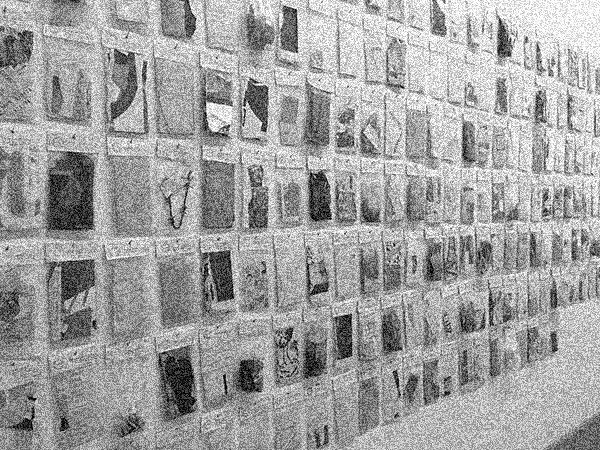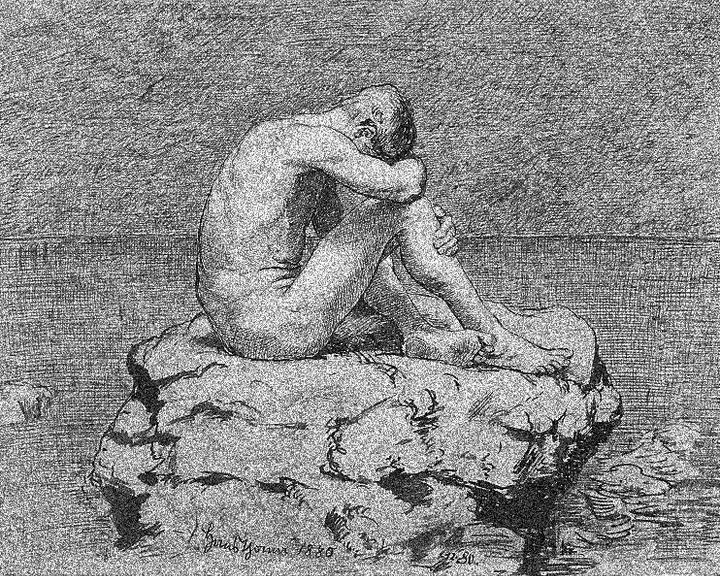From Avant-Garde to Sociologized Art, Part Two
Art’s desire to endlessly demonstrate its compromised place ultimately makes it as monotonous as the commodity culture from which it tries to distinguish itself.

Part One of From Avant-Garde to Sociologized Art is available here.
A social outlook operates with such ubiquity today that it borders on constituting contemporary art’s a priori. But the emergence of sociologized art—art that locates meaning in its existence as a social fact and in calling attention to society—has no linear history. Its genesis has to be speculatively traced to the slow collapse of modernism, to developments in politics as well as art history.
The revolutionary upheavals of the late 60’s saw workers and students struggle to find common ground in a set of shared material interests. Europe’s bohemian intelligentsia was hobbled after WWII, and many would-be radicals later migrated into the professionalized realm of the academy. On the other hand, the intellectual tradition of political Marxism that developed in direct contact with ongoing struggles was folding under the weight of the Cold War. Radical thought was given a new autonomy from immediate application, turning to questions of consciousness and history. “Theory” emerged as a form of critique liberated from direct political analysis. For some this was welcome freedom from stale Marxist dogma, for others a loss of living contact with the class whose struggles their work was supposed to inform. No longer tasked with strategizing workers’ conflict with the capitalist class, intellectuals and academics turned to an analysis of culture and ideology. Critical theory shifted from the primacy of structural analysis and shared class interests to culture, identity, and subjectivation.
These changes had deeper theoretical roots as well. Marxism’s Hegel-inspired focus on the productive contradictions of capitalist social relations gave way to a social theory that takes society as a coherent system. The belief in capitalism’s necessary collapse was already faltering. The sociology of knowledge and cultural criticism—Mannheim, Habermas, and Luhmann in Germany; Bourdieu, Althusser, and Foucault in France—provided the theoretical armature of this new critical theory. Post-structuralism’s critique of metanarratives—including capitalism’s macroeconomic laws of motion—further problematized theories of capitalism as a contradictory totality vulnerable to critique, transformation. And while ideology and culture took center stage, the understanding of both had profoundly changed.
What was once called “the sociology of knowledge” began by removing ideology critique from the context of unfolding class struggle to the apolitical analysis of social position and mental contents, from class structure to cultural indexing. It became “academic”. In the process it naturalized those elements of capitalist society that Marxist concepts were created to see through: that production of useful things within capitalist social relations turns, as if by magic, into a means of wealth accumulation for the few and immiseration for the many. The sociology of knowledge brought the Marxian concept of ideology up from these depths. Ideology was was no longer conceived primarily as a set of inversions that make people into things and things (and later money) into the social glue that holds us all together. This theory of consciousness cut across class lines even as it provided an inroad to the theory of exploitation. Ideology instead became opinion research: a demonstration of who believes what and why according to cultural capital and position in the social field. The categorization of ideological opinion became more important than the consciousness of the social domination, a shift that affected not only our understanding of politics and subjectivity but also the role of culture and experience within a program of social change.
Marx’s analysis of the fetish forms of social relations showed how our everyday perceptions of money, commodities, wages, and capital are both false and necessary for social reproduction. Consciousness of the law of value and labor as the socially mediating form of wealth—which appears in everyday consciousness in the forms of commodities, money, and capital—is blocked by the nature of capitalist property relations that work through these real abstractions in everyday class relations. When the worker receives a wage, she is under the impression that she has been paid fairly for her labor power. Exploitation is hidden by the fetish form of wage labor, and the compulsive drive for profit and accumulation appears natural, inevitable, and universally beneficial because, ultimate, from profits come wages. This is why for Marx, only critique, and not any explanatory theory, can recognize the antagonistic class relations that are covered over by ideology.
Insofar as the political valence of aesthetic experience had been located in the relationship between social truth and illusion, between false consciousness and the art form as a site of radical alterity, the turn to a sociology of knowledge corresponds to a fundamentally different vision of art’s political role within modernity. The goal of art in critical theory was always connected to that of critique itself—to produce a form of experience that transforms consciousness. To do this, art needed to abrogate or counteract the fetish forms of everyday consciousness and the domination of people by time. But after the mid-century, the belief in radical experience as art’s political telos came under scrutiny. And what is perhaps more important for art in the post-War years and beyond, the shift of radical theory into the academy was mirrored in sociological changes in the place of artists, the market, modes of distribution, criticism, and reception.
When art takes society as the horizon of what it can express, its utopian dimension atrophies. Just as the gap between ideology and everyday consciousness disappears in the sociology of knowledge, so the participation in the “more-ness” of art’s semblance character is reduced to false consciousness. Art’s arrogation of the beauty of nature that “appears to say more than it is”—which allows art to become more than the positivist registering of reality—becomes little more than the stuffy aesthetic doctrine of a declining liberal bourgeoisie. The obliquely conceptual, ineffable, and socially irreducible quality of art is replaced by explanatory power, cultural habitus, and the maneuverings of capital in circulation through artworks. One perspective is no better than any other, and the social content contained in art is addressed in a positivistic manner—as information.
The concept of society now operates like a schema. Schema, as a critical-aesthetic concept, expresses the conformism, repetition, and standardization that inform mass culture’s pre-digested products. The production and consumption of culture reduced to exchange requires commensurability between objects. In this view, the Kantian schema of pure reason—the spontaneous activity of the mind that brings the sensuous given of intuition under the pure concepts of the understanding—does not emerge as the essential epistemology of every empirical subject. The schema, today, is manufactured. It is a material process of standardization within production and its corresponding modes of reception; it is a reality internal to the way things are made and the socialized human beings who are made to conform to them. Just as the repetitive use of a particular software begins to structure our habits of perception and response, so the standardized forms of cultural objects begin to place limits on what and how we are able to experience. Today, we sniff around artworks for what they say about society.
Corresponding to this is a skeptical attitude to art’s power of transcendence. This skepticism is a major source of artistic cultural capital, a curious form of artworld street cred. Artists deploy an ironic knowingness and cannily manipulate art’s ideological character. The more nuanced forms dissect the ways that appearances express unacknowledged dimensions of power. Society does not figure in sociologized art as a set of forces transfigured through construction into something more than is the case. Rather, society has become a theme. This change influences art’s inner characteristics as well as the way form relates to the world. Not only is art’s social content reified into an idea, but what previously amounted to one of art’s methods for grasping the social—its ability to capture society’s contradictory dynamics in form—is secondary to other aims. Sociological nuance takes precedent to the insight of previous avant-gardes: that art loses its grasp on society by too faithfully reflecting it. Today, even art’s “resistance” operates as a schema, just as the very concept of resistance has become meaningless. By reflecting on the social situation and its place within it, art risks overwhelming its immanent details with what it ultimately opposes. Much political art today does little more than display how false everything is, as if this insight is not well known to anyone who looks closely at contemporary culture. Art’s desire to endlessly demonstrate its compromised place ultimately makes it as monotonous as the commodity culture from which it tries to distinguish itself.
Much has been said about the collapse of criticism, previously conceived as the disinterested judgment of a work’s aesthetic properties. Sociologized criticism was not wrong to call this form ideological. But even after the death of the great generation of “theory,” the integration of its insights into criticism is so complete that it often serves as little more than jargon for publicity statements. Artists are now adept theoreticians of their own sphere. They have co-opted not only the job of the critic but the social theorist of art as well. It is no longer bourgeois-era “art criticism” alone that can be used as a tool for the cultivation of a discerning consumer base. The move from aesthetic criticism to theory-inflected “critique” has by no means saved criticism from its compromised role. The ‘critical’ sociology of art, a form of writing that has become its own genre of “theory,” is itself another schema to be employed for pseudo-differentiation and the creation of new demand. One begins to talk not about what a work looks like and the kind of experience it permits but about how the work problematizes art’s commodification, the institutionalization of the gaze, the racialized nature of culture, etc. The artist’s bothered conscience stems from the inevitable commodity status of the work, which becomes property of the rich and powerful. But even attempts to advertise its disenchanted status as nothing more than an object for sale starts to function as new value-indicator.
There is a fundamental contradiction between the objective tendency of social theory and the parameters of artistic production and reception. Social theory concerns those elements of objectivity, forms of domination, and behavioral patterns that are irreducible to individual volition. But art, always geared to the particular details of formal construction, cannot but confront the subject as an individual. Contemporary art struggles with this insofar as individuals no longer exist in the same way, and maybe even not as individuals. That some contemporary art has replaced its orientation to subjective experience with an indifference to the individual, or with an appeal to a vague, mute non-subject, is perhaps paradoxically part of an attempt to remain adequate to the state of the individual in late capitalism. The transformation into human excess of whole populations tangential to legitimate access to waged labor makes the short phase of radical bourgeois subjectivity—and with it the epistemological purview of radically autonomous art—appear a brief intermission.
But perhaps it is not what art can tell us about society that draws us to it. One’s tastes by no means always fall in line with one’s political views. That art maintains an enigmatic character even when saturated with conceptuality, that it contains a dream of nature even in the critical reflection on its role in society—these facts are arguably more essential for drawing out art’s political implications. Art’s utopian dimension is inseparable from its uselessness, and the entire realm of authorized culture—more profitable every year—could be said to be fueled by people paying more than something is worth. But art’s uselessness is also inseparable from its existence as an apparition—an object of experience that is incommensurable with previous, standardized experience. Once the element of art’s alterity is removed it becomes, for those able to afford its luxury options, an investment opportunity and a conspicuous display for the production of prestige. On the other hand, the more technology structures affect, the less likely this type of experience will be possible.
Art’s resistance to society, the resistance implicit in any activity that develops a logic not fundamentally reducible to exchange, has never disappeared. By outlining it here, it receives an apologia it doesn’t need. The socialization of art is by no means absolute; it is perhaps even in transition to a minority position. Nor is this analysis a judgment upon contemporary artists, or an attempt to outline why contemporary art is all garbage—the position of philistines the world over. There are probably more highly trained, thoughtful, and talented artists today than ever before. The point is rather to draw attention to objective tendencies within culture itself.
Just as the psychoanalytic telos is to help the individual move from neurotic misery to everyday unhappiness, so art’s telos is to provide the feeling of transient escape for the trapped subject. Art’s purposelessness provides an experiential corrective to ideology no longer conceived as a set of manipulative mental contents but as total experiential debility. This aspect does not provide a sweeping framework to categorize and subsume what might be taking place, and it is too vague to be acceptable as a legitimate politics of art. But in the contemporary moment it is not difficult to feel how problematic art has become. It is based on the luxury of undistracted leisure time—something that is disappearing from life. It now appears conservative when it merely allows for the relaxation of the objectively ludicrous tension of self-preservation that still governs daily life—precisely that which prohibits the kind of experience that might allow culture to become a dream of something more. By developing our access to historical memory, the social critique of art and historical analysis have the power to resuscitate the potential of this experience against a theory of art that takes the social totality as the final word.
■
This piece is an abridged version of an essay that originally appeared in the first issue of Cured Quail.
Chris Crawford is a writer coughing up construction dust in Brooklyn.



